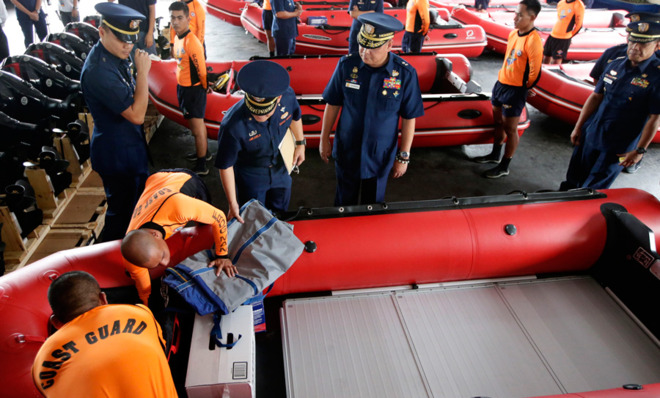Super Typhoon Haiyan is one of the strongest storms ever
The Philippines braces itself as Haiyan's winds pass 200 m.p.h.

Thousands of people are being evacuated from the central Philippines as officials brace for the arrival of Super Typhoon Haiyan, which is expected to make landfall on Friday. Known as Yolanda in the Philippines, the super typhoon is expected to be the strongest storm to hit the planet in 2013.
Here's a look at what the people of the Philippines are up against.
What is a super typhoon?
The Week
Escape your echo chamber. Get the facts behind the news, plus analysis from multiple perspectives.

Sign up for The Week's Free Newsletters
From our morning news briefing to a weekly Good News Newsletter, get the best of The Week delivered directly to your inbox.
From our morning news briefing to a weekly Good News Newsletter, get the best of The Week delivered directly to your inbox.
A typhoon with wind speeds of at least 150 m.p.h., the equivalent of a category 4 or 5 hurricane. (The only difference between a hurricane and a typhoon is where they occur).
How bad is Super Typhoon Haiyan?
Gusts have been measured at an extremely dangerous 208 m.p.h., with sustained winds of 174 m.p.h. as it moves over the Pacific Ocean. That, according to National Oceanic and Atmospheric Administration (NOAA), is "almost max intensity for a cyclone" — meaning this is about as big as a storm can get on Earth.
The super typhoon should weaken as it makes landfall sometime on Friday, but only to 155 m.p.h., which has caused officials to evacuate around 2,500 people from the Eastern Visayas region of the Philippines.
A free daily email with the biggest news stories of the day – and the best features from TheWeek.com
The Weather Channel calls winds of that speed "life-threatening" and notes that no building — even those constructed with brick or concrete — is safe from the destruction.
Haiyan is so big in diameter (about 500 miles) that experts are predicting that two-thirds of the country will be affected by it. Officials warn that 12.9 million people will experience winds of "cyclone strength or above."
Are super typhoons common?
Not of this magnitude. So far in 2013, five super typhoons have formed in the Pacific Ocean, and none have come close to creating the level of destruction that officials believe Haiyan will wreak. The Philippines experiences about 20 typhoons of varying strength during an average year.
How bad will the damage be?
Last year, Super Typhoon Bopha, which featured similar wind speeds, hit the Mindano islands in the southern Philippines. The result was 1,100 people dead and $1 billion in property damage.
This storm could be even worse, especially considering that the central province of Bohol was hit by an earthquake last month that killed more than 200 people, leaving many residents in makeshift shelters.
Flooding is expected to be a problem throughout most of the country. The one bright spot: Haiyan is expected to largely miss the country's capital, Manila, the most densely populated city in the world.
Wind speeds are expected to weaken to about 125 m.p.h. as the storm leaves the Philippines and heads towards Vietnam, possibly on Sunday.
Keith Wagstaff is a staff writer at TheWeek.com covering politics and current events. He has previously written for such publications as TIME, Details, VICE, and the Village Voice.
-
 Moscow cheers Trump’s new ‘America First’ strategy
Moscow cheers Trump’s new ‘America First’ strategyspeed read The president’s national security strategy seeks ‘strategic stability’ with Russia
-
 Political cartoons for December 8
Political cartoons for December 8Cartoons Monday's political cartoons include ICE in the Big Easy, Warner on the wane, and a Putin peace deal
-
 Did Trump just end the US-Europe alliance?
Did Trump just end the US-Europe alliance?Today's Big Question New US national security policy drops ‘grenade’ on Europe and should serve as ‘the mother of all wake-up calls’